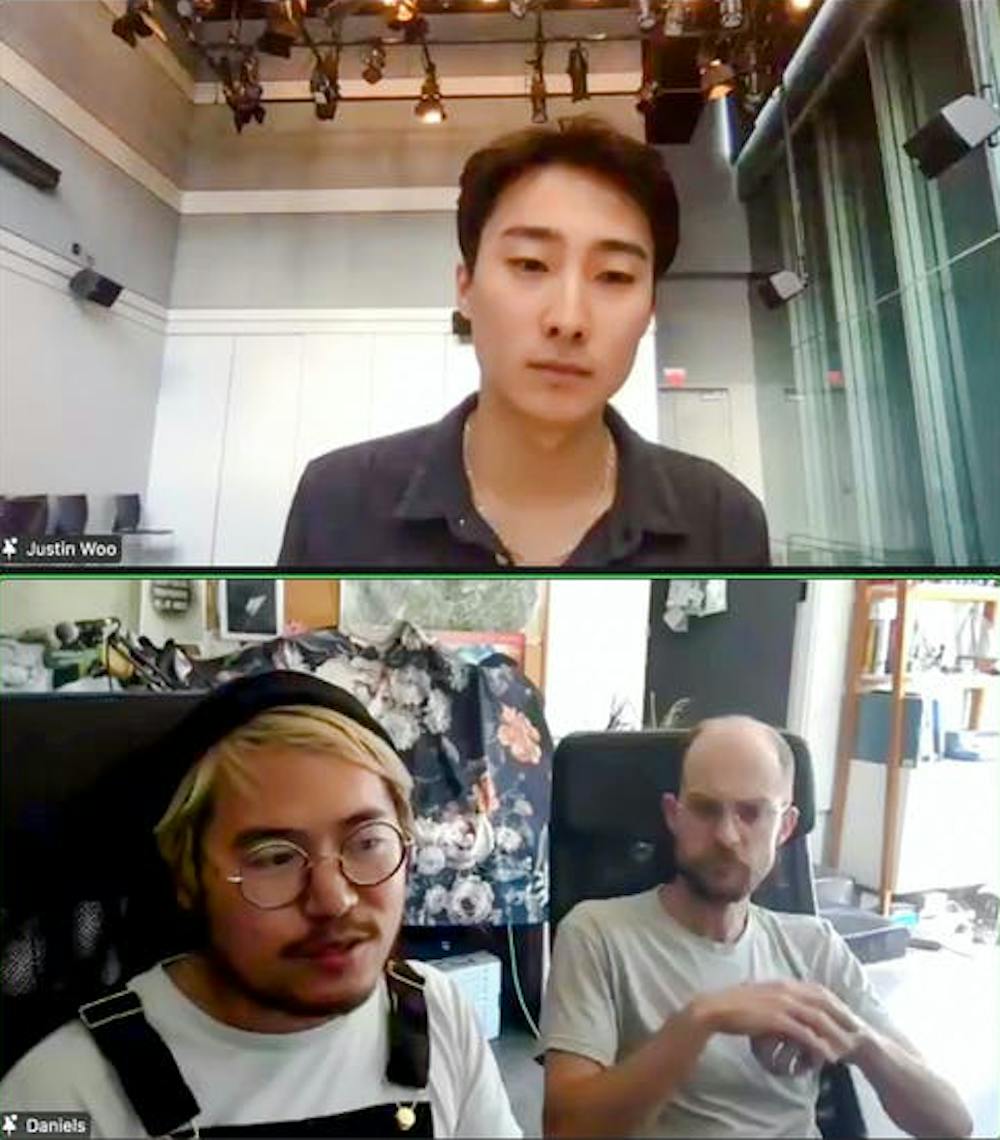In the keynote talk of day two of the Ivy Film Festival, “Everything Everywhere All at Once” directors Daniel Kwan and Daniel Scheinert — professionally referred to as “the Daniels” — were welcomed to campus virtually on Tuesday via Zoom. The talk, moderated by former Herald Staff Writer Justin Woo ’23, touched on the early parts of the directors’ careers, their creative processes and varying interpretations of their filmography.
The Daniels began their careers in the entertainment industry by directing music videos and commercials. They directed the videos of notable songs such as “Simple Song” by The Shins and “Turn Down For What” by DJ Snake and Lil Jon.
But eventually, they began to pursue ambitions of narrative works. “If you’re successful in the music video (and) commercial world, you’re constantly getting hit up by people who want to work with you and you kind of have to turn that faucet off and just say, ‘I’m going to walk away at the height of my career and focus on writing,’ ” Kwan said, adding that the directorial duo did just that for their debut feature film, “Swiss Army Man.”
“It took us three years to write that movie because we kept having to pull ourselves away from this industry that wanted so much from us,” Kwan said.
Scheinert said that the Daniels always sought to include narrative elements in their work. “I think we’re also different from some music video (and) commercial directors in that we just always wanted to jam as much narrative in there as we could and we’d get bored with just aesthetics,” he said.
Both directors said their career in music video directing has greatly influenced the way they approach narrative filmmaking. “We are able to shoot fast and we are able to shoot cheap now because we’ve learned so much through the gauntlet of music videos,” Kwan said.
Music still plays a significant role in the way the Daniels make films, they said. When talking about the balancing act of handling so many different plot threads in “Everything Everywhere All at Once” and keeping the audience engaged, Kwan said, “The secret weapon in all of this is the music, because the music kind of guides you through all of it. It feels like you’re on a roller coaster ride rather than a runaway bus.”
Kwan and Scheinert also discussed their process and influences in crafting their latest film. Scheinert said that as collaborators, the pair “do a lot of outlining together and then a lot of writing separately.” He added that his approach involves creating a “crappy rough draft” to “connect the dots of the outline,” while Kwan’s approach involves “disappear(ing) for two weeks and coming back with 20 great pages” that address a small part of the outline.
Ultimately, “we’re constantly mushing those things together,” Scheinert said.
In discussing their influences, Kwan and Scheinert cited works from East Asian directors such as Wong Kar-wai, Bong Joon-ho and Akira Kurosawa. “The fun thing about each of these movies is because they don’t come from a Western perspective, they have been mutated and deformed in different ways that make them so special,” Kwan said. He added that he admires the experimentation with genre and tone in previous decades by Korean auteurs such as Park Chan-wook and Bong Joon-ho — experimentation which he said American directors were not trying.
And Kwan and Scheinert’s inspiration didn’t just come from feature films. The Daniels also referenced early YouTube animations and mixed-media montages as influences on their filmmaking style.
“Suddenly there was this whole generation of independent animators that were releasing stuff that was so singular because it was just one person working on it in their bedroom,” Kwan said. “So a lot of that stuff was super inspiring early on in our careers and has maintained a really big spot in our brains.”
Throughout the talk, the discussion repeatedly returned to the narrative of “Everything Everywhere All at Once.” In response to a question about the nature of reality in the film, Scheinert said that he and Kwan like to “make movies that end somewhat ambiguously and work on metaphorical levels, but as filmmakers, it’s really important that … we treat it like it's really happening and that’s what we say to the actors as well.”
When discussing how a viewer should approach “Everything Everywhere All at Once” and other films, Kwan encouraged the audience to immerse themselves in the viewing experience, rather than analyzing in real-time. “I think we’re all so steeped in intellect and steeped in philosophy that we’ve labeled everything, we’ve put everything in boxes and we’ve accidentally built a wall around ourselves,” he said. “So while we’re watching movies or reading books, rather than experiencing it aesthetically, we’re actually just thinking about it in a way that is removing ourselves from it.”
Scheinert mirrored this sentiment. “Ultimately that’s why we make movies,” he said. “To try to make something that resonates and speaks to something that we feel.”

Finn Kirkpatrick was the senior editor of multimedia of the Brown Daily Herald's 134th editorial board. He is a junior from Los Angeles, California studying Comparative Literature and East Asian Studies. He was previously an arts and culture editor and has a passion for Tetris and Mario Kart.





